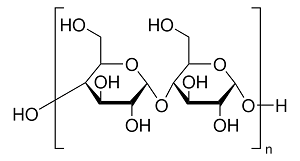HI! I’M ELEMENT AI.
Potato Starch

Product Description
Potato starch is a starch extracted from potatoes and has various industrial applications due to its unique properties.
Product:
Potato Starch
CAS:
9005-25-8
Synonym:
Food starch; Gum starch; Arrowroot powder
Structure:

Typical Characteristics
Appearance
White powder
Density
1.5 g/cm3
Melting point
256 -258 °C
Molecular Weight
342.30
Odor
Odorless
Purity
99%
Refractive index
1.50
Uses, Applications & Markets
Key applications
get a quote
We Offer Potato Starch
in various grades
A few of the grades available are listed below:



Potato Starch used in many
industry applications
Potato starch is a starch extracted from potatoes and has various industrial applications due to its unique properties. Here are some of its industrial uses:
- Food Industry: Potato starch is widely used as a thickening agent, stabilizer, and texture modifier in food products such as soups, sauces, bakery products, and ready-to-eat meals.
- Paper Industry: It is used in the paper and cardboard industry as a binder and surface sizing agent to improve paper strength, smoothness, and printability.
- Textile Industry: Potato starch is used in textile sizing to provide stiffness and strength to yarns and fabrics during weaving and finishing processes.
- Adhesives: It is used as a binder in the production of adhesives for paperboard packaging, corrugated board, and paper bags.
- Pharmaceuticals: Potato starch is used as an excipient in pharmaceutical formulations for its ability to act as a binder, disintegrant, and filler in tablets and capsules.
- Biodegradable Plastics: It is used in the production of biodegradable plastics and packaging materials as a renewable and eco-friendly alternative to synthetic polymers.
- Animal Feed: Potato starch is used as a binder and carrier in animal feed pellets to improve digestibility and nutritional value.
- Textile Sizing: It is used in textile sizing to provide stiffness and strength to yarns and fabrics during weaving and finishing processes.
- Cosmetics: Potato starch is used in cosmetic formulations such as powders, creams, and lotions as an absorbent and mattifying agent.
- Construction Materials: It is used in the production of plasterboard and gypsum-based products as a binder and additive to improve workability and strength.